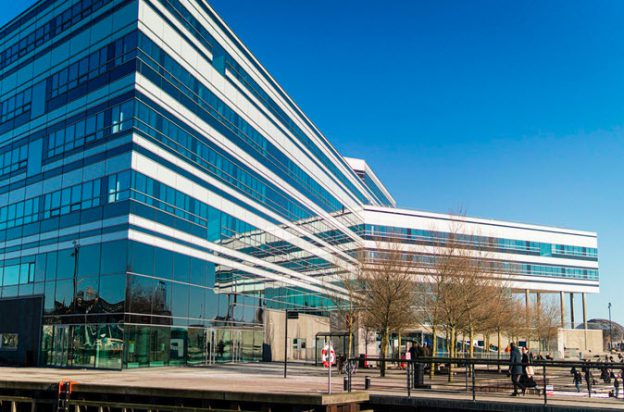2022 was a fairly rough year for office space real estate, thanks to inflation and the persistence of remote work. After slowdowns in commercial property market growth in the back half of 2022, investors are wondering what 2023 may and may not look like..
Here are some top takeaways on what to expect in the commercial office space market in 2023.
#1 – Office Space Valuation Is Down
There is no getting around it: office space valuations are down for 2022 and are expected to decline further in 2023. Tech centers have been hit the hardest by this decline, thanks to a combination of post-pandemic market shifts and general shifts in work culture.
For example, office vacancies in San Francisco hit 25% a few months back—nearly six times the pre-pandemic average.
One partial explanation for these trends is the prevalence of remote work. The desire for remote work has evolved past the fear of the pandemic and indicates a more widespread cultural trend in industries. Many industries are seeing a reckoning between management and labor as employees want more freedom and flexibility in scheduling.
Another explanation is inflation and high interest rates. The federal reserve hiked rates by 75 points in early November and another 50 points in December in an effort to curb inflation, making it harder for commercial buyers to finance mortgages and loans. Capitalization rates are just too low for many investors to justify high financing costs.
#2 – Hybrid Work Might Stimulate Office Leasing
Notably, though, there is a push to get people back into the office for work. Specifically, hybrid work schedules might cause a bump in real estate pricing. According to CEO of Kilroy Realty, John Kilroy, we’ll see a push for buying new and reimagined office spaces in 2023.
“The theme we continue to consistently see across markets is the preference for high-quality office space…leasing the best product is desirable and desirable locations are critical for companies to attract their employee base back to the office,” said Kilroy.
In other words, the key to getting employees back to the office is investing in high-quality properties that make attractive office environments.
#3 – Job Growth Is Strong
Despite general downturns in the market, there are some silver linings. Job growth across the back half of 2022 was strong and is expected to continue growing well into 2023 and beyond.
After sharply spiking during 2020, unemployment rates have fallen back to pre-pandemic levels of around 4%. As unemployment decreases and more companies build their employee rosters, we expect to see more office space uptake.
According to a recent report from the National Association for Industrial and Office Parks (NAIOP), office space absorption was 112 million square feet through the back half of 2022, and total absorption predictions for 2023 are at nearly 210 million square feet.
The predicted stabilization is a result of businesses still renting office space for hybrid work environments. Even if individual employees are spending less time in the office, companies still want physical spaces for collaboration as employees spend a few days a week in the office.
#4 – Bubbles Have Burst
2022 also saw some major financial bubbles burst, such as crypto, tech stocks, and SPAC mergers, meaning that there is somewhat of a ‘blank slate’ for investors to start from. According to a recent report from Deloitte, most investors (66%) report a positive outlook for real estate fundamentals, including property pricing, transaction activity, capital costs, and leasing activity.
Investors also seem specifically focused on downtown and suburban office spaces. According to the same Deloitte report, slightly over one-third of respondents said that downtown office space and suburban office space were the two most attractive risk-adjusted investment opportunities for 2023.
#5 – Election Concerns Causing Complications
Despite generally positive outlooks for 2023, political change and unrest heading into the 2024 presidential elections may cause uncertainty, and economic uncertainty is typically less-than-desirable for commercial real estate. Investors worry about tax changes and changes in large-scale economic policy.
However, the results of the 2022 midterm elections could be positive for commercial real estate markets. It is likely that the federal government will remain balanced between the two parties—something that historically has been good for commercial property markets.
Balanced governments typically find it harder to pass national-level legislation, meaning that there is less risk of new policies or regulations that might distort commercial real estate markets. Even if the presidency changes hands in 2024, it’s unlikely that there will be enough support on either side to overcome congressional gridlock.
Office Space Valuation Forecast
2023 will be an interesting year that may set the trajectory for commercial real estate markets for the next decade. The push to get back to the office will be complicated by the general desire for remote work, though investors can still benefit by buying high-quality properties with amenities that convince workers to come into the office.
Inflation is an ever-present concern for investors, but recent projections from the Federal Reserve predict falling inflation rates through 2023 and 2024. Office space valuations are likely to decline slightly in the first half of 2023, but investors are optimistic about the back half of the year going into 2024.
Commercial investors should focus on diversifying their investments to insulate from potential office space losses. There are also good opportunities for growth, specifically with Class A office space.
If you are looking for office space for lease or to buy, we can help with our network of hundreds of local office space specialists throughout the US and Canada. Contact us today to find out how we can get you the best deal and make sure you avoid costly mistakes.

